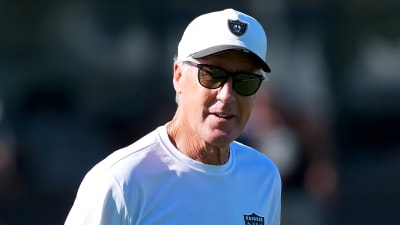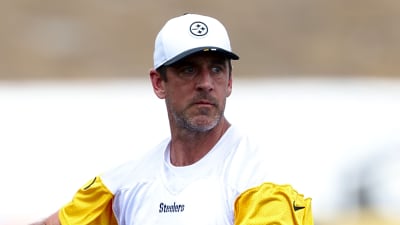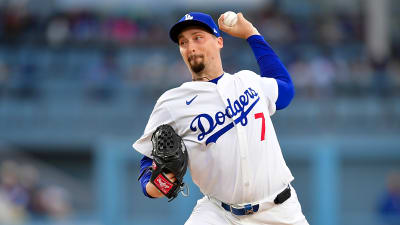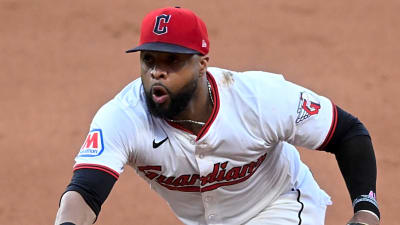
In a league where blockbuster trades or All-Star signings often measure offseason wins, the Boston Celtics bucked convention. No dramatic free agent poaching. No splashy move that lit up headlines. Instead, they executed something far more vital: a strategic financial retreat. Boston’s 2025 offseason was defined not by who they brought in or let go, but rather how those decisions may ultimately impact their long-term title hopes.
Coming off their record-setting 18th NBA title in 2024, the Celtics crashed out against the New York Knicks in the Eastern Conference Semifinals. The Celtics faced a sobering reality. Their roster, stacked and expensive, was a ticking luxury tax bomb under the new Collective Bargaining Agreement (CBA). With escalating penalties tied to the newly enforced “second apron,” Boston was staring down the barrel of a future filled with limited flexibility, heavier taxes, and an aging core with bloated contracts.
But rather than doubling down on continuity in blind pursuit of a repeat, Brad Stevens and the Celtics front office zagged where others might have zigged. By trading away Jrue Holiday and Kristaps Porziņģis and shedding significant salary, Boston took its fate into its own hands and made the single smartest move of the 2025 NBA offseason.
The second apron: A cap killer for contenders
To understand how deftly Boston operated, one must first appreciate the danger they faced. Under the 2023 CBA, teams exceeding the second luxury tax apron, approximately $187 million in total salary, incur far more than financial punishment. The restrictions are crippling:
-
No access to the mid-level exception
-
No aggregation of salaries in trades
-
No participation in sign-and-trades
-
No ability to trade picks more than seven years out
-
No flexibility in buyout markets
-
Repeater tax penalties after three out of four years above the tax
It’s not just expensive to live in the second apron, it’s paralyzing. The Los Angeles Clippers and Golden State Warriors learned this the hard way. Both spent wildly, only to find themselves boxed in, unable to improve or even pivot. Boston saw that trap coming.
Why trading Jrue Holiday and Kristaps Porziņģis wasn’t surrender, it was strategy
It’s easy to romanticize the 2024 Celtics as a historic group. Tatum and Brown were peaking. Holiday’s defense set the tone. Porziņģis brought spacing and shot-blocking. And Derrick White played his best basketball ever.
But that team came at a cost.
The Celtics’ offseason focus is trading Jrue Holiday, Kristaps Porzingis, and Sam Hauser, per @ShamsCharania on @PatMcAfeeShow
He said “they’re going to get offers on the three guys they’re focused on” and they “prefer not to trade” Jaylen Brown or Derrick White. pic.twitter.com/35U2oDNTpk
— SleeperCeltics (@SleeperCeltics) June 11, 2025
Jrue Holiday, though still elite defensively, was approaching his mid-30s and would have cost Boston upwards of $38 million in the final year of his deal. Porziņģis, injury-prone and owed over $30 million, was a health risk Boston could no longer afford to carry, financially or structurally.
By trading Holiday to Portland for Anfernee Simons and moving Porziņģis to the Hawks, acquiring Georges Niang and a trade exception, Boston achieved three objectives:
-
Got under the second apron, avoiding the worst CBA penalties
-
Reset the repeater tax clock, which will now be clean in 2027
-
Gained cost-controlled rotation players with flexibility and shooting
They didn’t trade core players to tank. They traded them to breathe.
With Jayson Tatum recovering from an Achilles tear, the Celtics wisely chose 2025–26 as their gap year, a controlled down season where they could survive without championship expectations, develop internal talent, and gear up for 2026–27. It was a necessary recalibration.
Celtics offseason: Post Porzingis
* 13 players under contract (including 1st)
* Enough room for vet minimum and second rd. pick pic.twitter.com/fr6EJ86OLb— Bobby Marks (@BobbyMarks42) June 25, 2025
Jaylen Brown and Derrick White will shoulder the scoring load, while Simons adds youth and offensive firepower. Payton Pritchard and Neemias Queta will get meaningful reps. There’s no pressure to overextend a roster that isn’t built for a deep playoff run.
That’s not failure. That’s cap management brilliance.
The financial impact: Celtics reclaim flexibility
Without Holiday and Porziņģis on the books, Boston is expected to drop below the second apron for 2025–26. That opens up several possibilities next summer:
-
Access to the full mid-level exception (~$13M)
-
Ability to make multi-player trades
-
Use of trade exceptions and buyout signings
-
Full use of their future draft picks
Had they stayed above the second apron, none of that would have been available. Instead of suffocating under contract bloat, Boston now controls their financial future. They’ll enter 2026 with a healthier Tatum, a more experienced Brown-White backcourt, a year of growth for their young players, and cap tools to retool meaningfully.
Boston’s move has been mischaracterized in some circles as a step backward. That interpretation lacks vision. What the Celtics have done mirrors the most successful franchises across sports: make bold decisions today to secure a sustainable tomorrow.
They could have paid Holiday. They could have gambled on Porziņģis staying healthy. But that would have meant living in the second apron for a third consecutive season, triggering massive repeater taxes and giving up all flexibility.
Instead, they made hard choices. And it will pay off.
In today’s NBA, flexibility is currency. With the league trending toward parity and increasingly complex salary rules, the teams that stay agile, not just talented, are best equipped to survive. Look no further than the Miami Heat or the Denver Nuggets, both of whom have thrived through patient, structured team-building rather than flashy spending.
Boston’s approach mirrors that mindset. They’ve retained their two best players. They’ve kept high-character veterans like White. And they’ve bought themselves time, time to evaluate, time to pivot, and time to strike when the opportunity is right.
Let’s be clear: the Celtics didn’t close their title window. They just slid it open a bit wider.
Had they pressed ahead into a second apron scenario, 2025–26 could’ve been their last chance with the current core. Instead, they’ve delayed that sunset by ensuring the front office will have the cap tools and flexibility in 2026, 2027, and beyond.
Think of this as a slingshot: the team pulls back slightly now, only to be launched forward with force when fully healthy and financially armed.
The smartest move is sometimes the quietest
The 2025 offseason will be remembered for bold trades, massive contracts, and splashy drama elsewhere. But the Boston Celtics, true to their legacy, chose substance over style. They gave up good players. But they gained long-term control. They sacrificed a short-term chase. But they safeguarded a longer dynasty.
That’s what true team-building looks like in the modern NBA. It’s not always loud. But it’s always smart.
More must-reads:
- Former NBA champion shares shocking opinion on Luka Doncic
- Will Eagles limit Saquon Barkley's workload after dominant season?
- The 'NBA Summer League MVPs' quiz
Breaking News
Trending News
Customize Your Newsletter
 +
+
Get the latest news and rumors, customized to your favorite sports and teams. Emailed daily. Always free!








